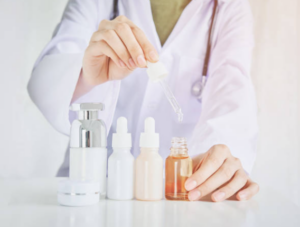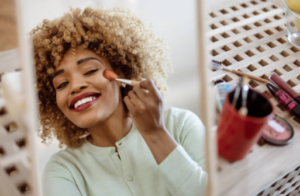The Cruelty-Free Dilemma

In the pursuit of beauty, many of us strive to make ethical choices, aligning our values with our purchasing decisions. One of the most significant ethical considerations in the beauty industry is cruelty-free products—those not tested on animals. However, as consumers, we often find ourselves grappling with a dilemma: Do we prioritize ethical consumerism and opt for cruelty-free products, or do we prioritize effectiveness, even if it means compromising our ethical standards? In this blog, we delve deep into the complexity of the cruelty-free dilemma, exploring the ethical, practical, and personal considerations that inform our beauty choices.
Cruelty-free beauty refers to products that have not been tested on animals at any stage of the production process. This includes both the finished product and its individual ingredients. For many consumers, choosing cruelty-free products is a non-negotiable aspect of their beauty routine, reflecting their commitment to animal welfare and ethical consumerism. However, navigating the world of cruelty-free beauty can be challenging, as the absence of standardized regulations and certifications can lead to confusion and misinformation.
While the ethical considerations of cruelty-free beauty are undeniable, some consumers find themselves questioning the effectiveness of these products compared to their non-cruelty-free counterparts. There is a common misconception that cruelty-free products may not perform as well or deliver the same results as those tested on animals. This perception stems from the belief that animal testing is necessary to ensure the safety and efficacy of beauty products—a notion that has been debunked by scientific advancements and alternative testing methods.
Exploring Alternative Testing Methods
In recent years, significant strides have been made in the field of cosmetic testing, leading to the development and validation of alternative methods that eliminate the need for animal testing. These innovative approaches offer scientifically valid and ethically sound alternatives, ensuring the safety and efficacy of beauty products without subjecting animals to harm. Let’s explore some of the most promising alternative testing methods shaping the future of cruelty-free beauty:
- In Vitro Testing: In vitro testing involves conducting experiments on human cells or tissues cultured in a laboratory setting. These tests provide valuable insights into how cosmetic ingredients interact with human biology without the need for animal subjects. One example of in vitro testing is the use of reconstructed human skin models, which mimic the structure and function of human skin and can be used to assess the safety and efficacy of skincare products.
- Computer Modeling: Computer modeling, also known as computational toxicology, utilizes sophisticated software programs to predict the potential toxicity of cosmetic ingredients based on their chemical structure and properties. By analyzing vast databases of chemical information, researchers can identify potential hazards and assess the safety of cosmetic ingredients without resorting to animal testing. Computer modeling has revolutionized the field of toxicology, offering a faster, more cost-effective, and cruelty-free approach to safety assessment.
- Human Volunteer Studies: Human volunteer studies involve conducting clinical trials and tests on willing human participants to evaluate the safety and efficacy of cosmetic products. These studies provide real-world data on how products perform on human skin, hair, and nails, offering valuable insights that cannot be replicated in animal models. Human volunteer studies adhere to strict ethical guidelines and protocols to ensure the safety and well-being of participants, making them a humane and reliable alternative to animal testing.
- High-Throughput Screening: High-throughput screening (HTS) involves the rapid testing of large numbers of chemical compounds to identify potential hazards and assess their safety profiles. HTS platforms utilize automated assays and robotic systems to screen thousands of compounds simultaneously, allowing researchers to identify promising candidates for further testing while minimizing the need for animal experimentation. HTS has revolutionized the field of toxicology, accelerating the discovery of safe and effective cosmetic ingredients while reducing reliance on animal testing.
- Organ-on-a-Chip Technology: Organ-on-a-chip technology involves culturing human cells on microfluidic devices that mimic the structure and function of human organs, such as the skin, liver, and kidneys. These miniature organ models replicate the complex physiological processes of human organs, allowing researchers to study how cosmetic ingredients are metabolized and eliminated from the body without the need for animal testing. Organ-on-a-chip technology holds tremendous promise for advancing our understanding of human biology and accelerating the development of cruelty-free cosmetics.

The Role of Certification
One way for consumers to identify cruelty-free products with confidence is through certification programs and labels. Organizations such as Leaping Bunny, PETA’s Beauty Without Bunnies, and the Choose Cruelty-Free campaign offer certifications that verify a product’s cruelty-free status. These certifications provide assurance to consumers that the brand has undergone rigorous scrutiny and adheres to strict cruelty-free standards. However, it’s essential to note that certification is voluntary, and not all cruelty-free brands choose to pursue formal accreditation.
Despite the growing demand for cruelty-free beauty, the industry still grapples with ethical grey areas and challenges. For example, while a product may be cruelty-free in terms of animal testing, its ingredients may be sourced from suppliers that engage in animal testing. Additionally, brands that sell their products in countries where animal testing is required by law may face dilemmas regarding their cruelty-free status. These nuances highlight the complexities of ethical consumerism and the importance of transparency and accountability within the beauty industry.

Personal Values vs. Practical Considerations
When it comes to navigating the cruelty-free dilemma, consumers often find themselves torn between their personal values and practical considerations. While many individuals are committed to supporting cruelty-free brands as a reflection of their ethical principles, they may also face practical challenges and constraints that influence their purchasing decisions. Let’s explore some of the key factors that come into play:
- Budgetary Constraints: One of the most common practical considerations for consumers is budgetary constraints. Cruelty-free beauty products, particularly those that are certified by reputable organizations, may come with a higher price tag compared to their non-cruelty-free counterparts. This can pose a significant barrier for consumers on a tight budget who may need to prioritize affordability over ethical considerations. However, it’s important to note that not all cruelty-free brands are prohibitively expensive, and there are affordable options available for budget-conscious consumers.
- Accessibility: Accessibility is another practical consideration that can influence a consumer’s decision to choose cruelty-free products. While major retailers and online platforms may carry a wide range of beauty brands, including cruelty-free options, consumers in certain regions or countries may have limited access to these products. Additionally, some cruelty-free brands may only be available through specialty retailers or online platforms, making them less accessible to consumers who prefer to purchase in-store. Limited availability can pose challenges for consumers seeking cruelty-free options in their local area.
- Effectiveness and Performance: Effectiveness and performance are key factors that consumers consider when evaluating beauty products, regardless of their ethical stance. While there is a common misconception that cruelty-free products may not perform as well as those tested on animals, this notion has been debunked by scientific research and consumer testimonials. However, some consumers may still have reservations about the efficacy of cruelty-free products, particularly if they have had negative experiences in the past. Overcoming these perceptions requires education, awareness, and firsthand experience with cruelty-free options that deliver on their promises.
- Product Availability and Variety: Product availability and variety play a significant role in consumers’ purchasing decisions, particularly when it comes to beauty products. While the cruelty-free beauty market has grown significantly in recent years, it may still lag behind non-cruelty-free options in terms of product availability and variety. Some consumers may struggle to find cruelty-free alternatives for specific products or categories, leading them to compromise on their ethical principles out of necessity. However, as demand for cruelty-free options continues to rise, brands are expanding their offerings to cater to a diverse range of consumer preferences.
- Time and Convenience: Time and convenience are practical considerations that can impact consumers’ ability to research and purchase cruelty-free products. Conducting thorough research on brands’ cruelty-free status, ingredients, and certifications requires time and effort, which may not be feasible for all consumers, particularly those with busy lifestyles. Additionally, purchasing cruelty-free products online may require longer shipping times or additional fees, further complicating the decision-making process. As such, consumers may opt for non-cruelty-free options for the sake of convenience, especially if they are unable to dedicate the time and resources to navigate the complexities of the cruelty-free beauty market.
Despite the challenges and complexities inherent in the cruelty-free dilemma, there is a growing movement towards conscious consumerism within the beauty industry. More than ever, consumers are demanding transparency, accountability, and ethical integrity from brands. This shift in consumer behavior has prompted many beauty companies to reassess their practices and embrace cruelty-free principles. Additionally, social media and online communities play a vital role in amplifying awareness and advocacy for cruelty-free beauty, empowering consumers to make informed choices and drive positive change.

Tips for Navigating the Cruelty-Free Dilemma
For those navigating the cruelty-free dilemma, here are some tips to help you make ethical and effective beauty choices:
- Do Your Research: Take the time to research brands and their cruelty-free policies. Look for certifications and labels that verify a product’s cruelty-free status.
- Look Beyond Labels: While certifications are valuable, they are not the only indicator of a brand’s ethical practices. Dig deeper into a brand’s supply chain, sourcing practices, and commitment to sustainability.
- Experiment and Explore: Don’t be afraid to experiment with different cruelty-free brands and products. You may be surprised by the quality and effectiveness of ethical beauty options.
- Advocate for Change: Use your voice and purchasing power to advocate for cruelty-free practices within the beauty industry. Support brands that prioritize animal welfare and sustainability, and encourage others to do the same.
- Stay Informed: Stay informed about developments in the cruelty-free beauty movement and engage with online communities and resources dedicated to ethical consumerism.
The cruelty-free dilemma poses a complex and multifaceted challenge for beauty consumers, balancing ethical principles with practical considerations. While the decision to prioritize cruelty-free beauty is deeply personal, it is also an opportunity to advocate for positive change within the industry. By supporting brands that uphold ethical standards and embracing innovative alternatives to animal testing, consumers can align their beauty choices with their values and contribute to a more compassionate and sustainable future.

